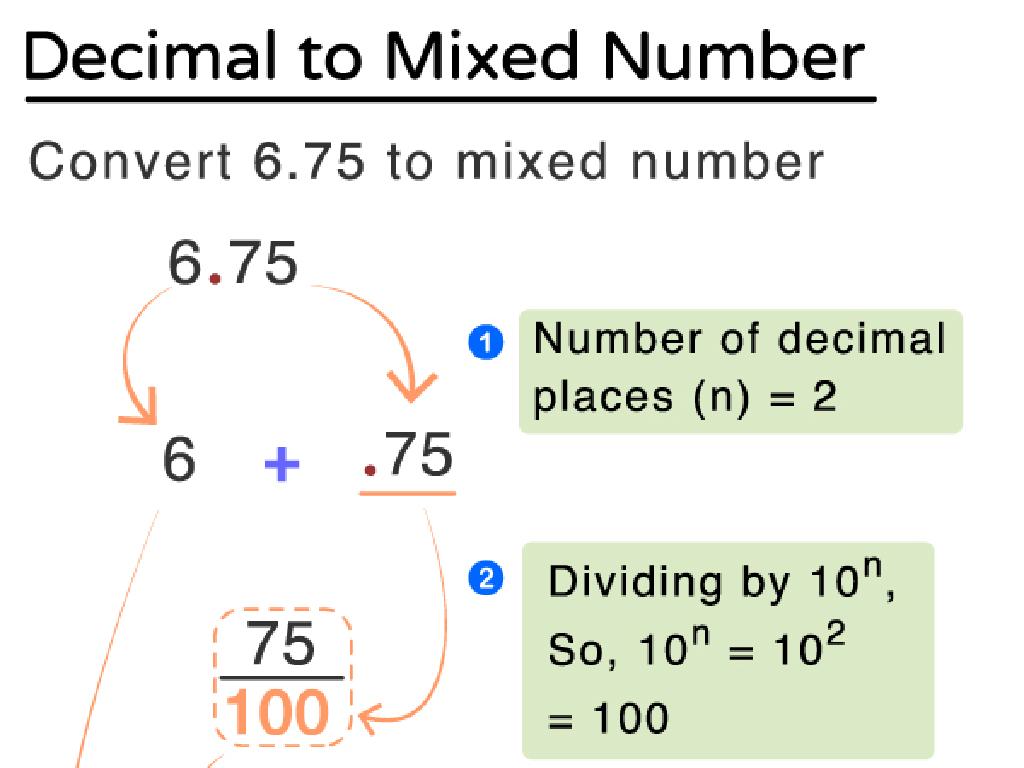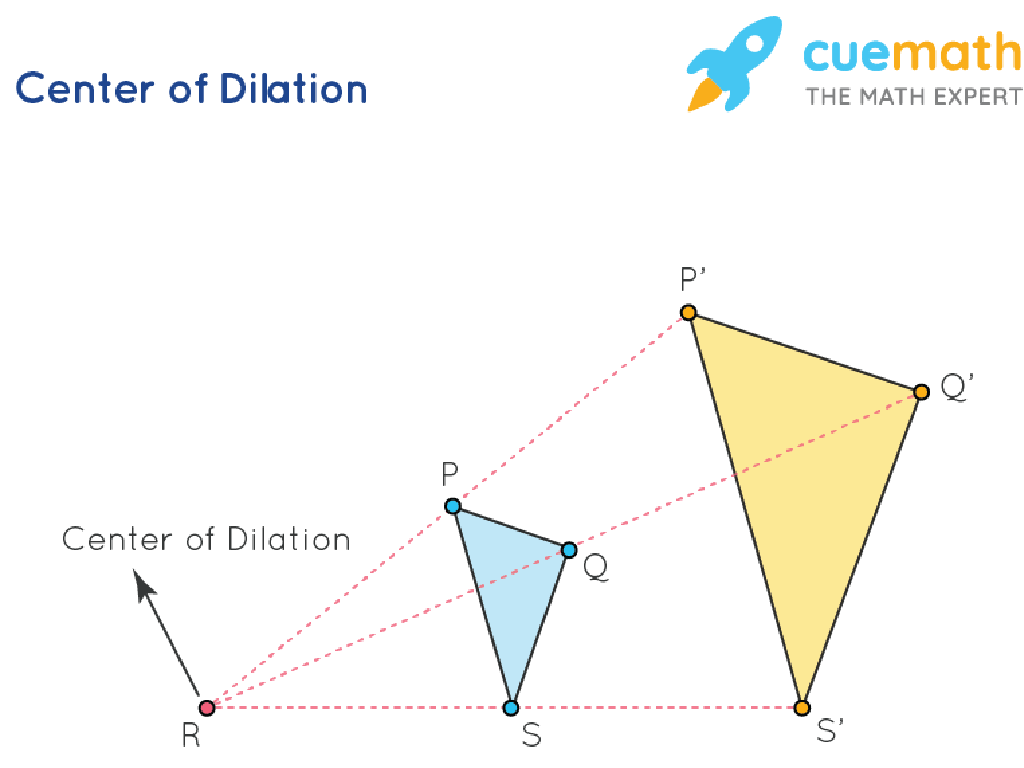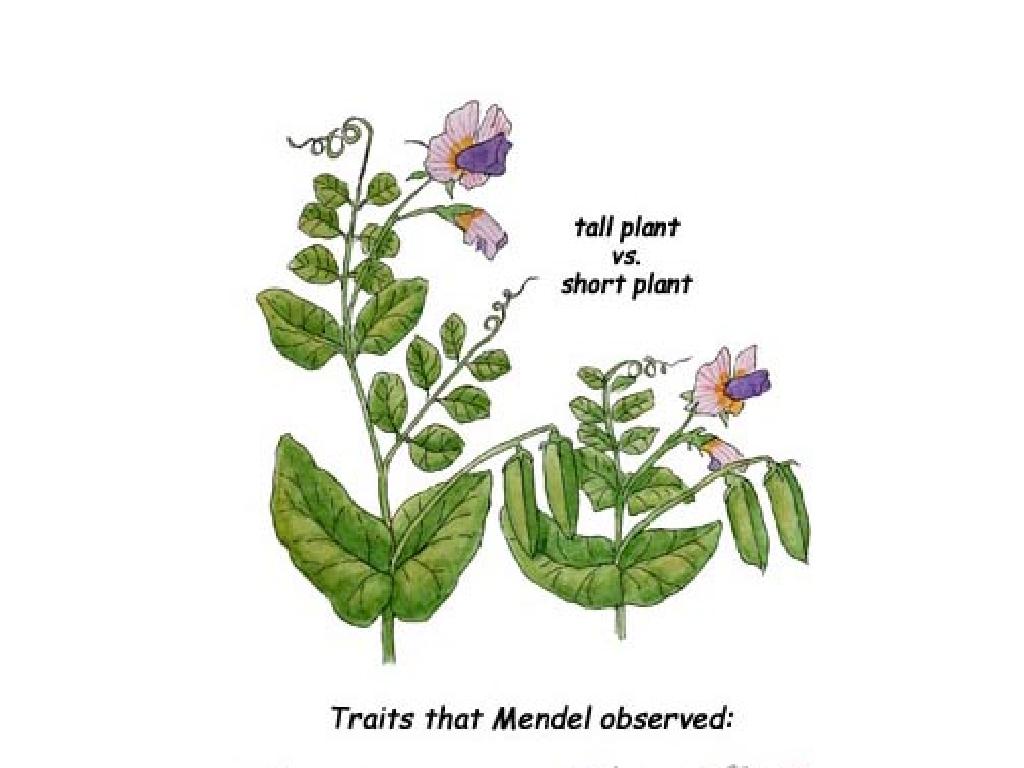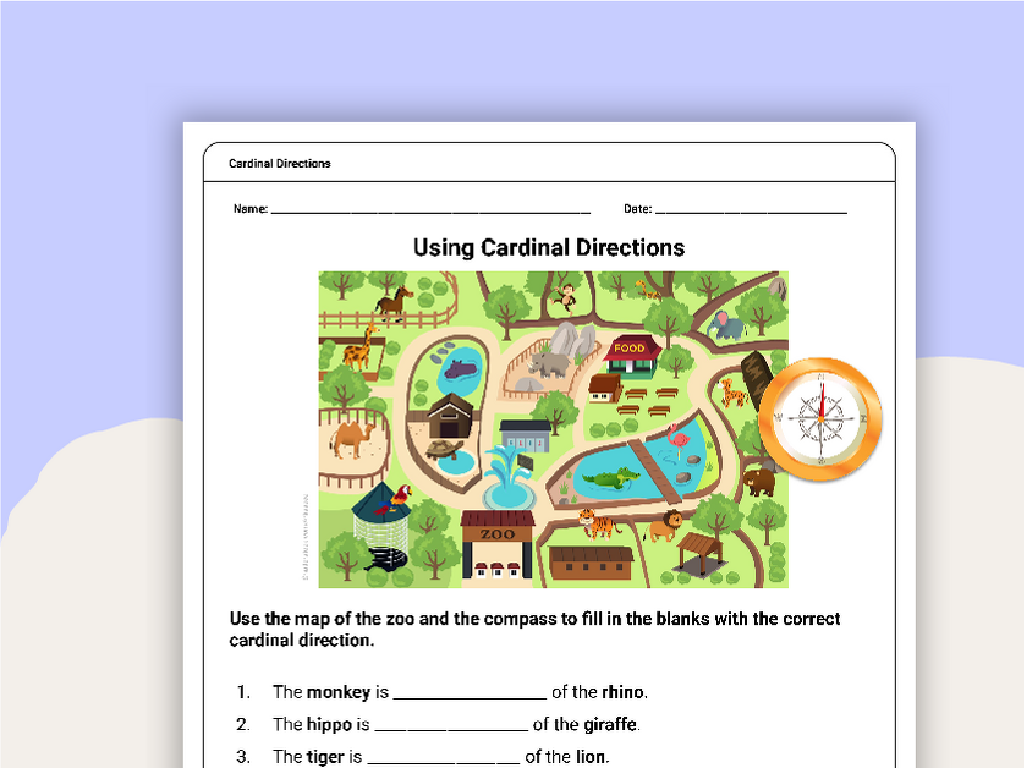How Do Animals Use Their Body Parts?
Subject: Science
Grade: First grade
Topic: Animals
Please LOG IN to download the presentation. Access is available to registered users only.
View More Content
Exploring Animal Movements
– Animals use body parts to survive
– Like how we use our hands and feet
– Legs for running, wings for flying
– Cheetahs run fast, birds soar high
– Fins help fish swim, beaks for eating
– Fish glide in water, birds pick with beaks
– Let’s move like different animals!
|
This slide introduces the concept of how animals use their body parts for various activities essential for their survival. Start by discussing familiar animals and their movements. Explain that just like humans use their hands and feet for tasks, animals have specialized body parts. Legs are for running or jumping, wings for flying, fins for swimming, and beaks for eating. Engage the class by having them imitate animal movements, which will help them remember the function of each body part. For example, hop like a kangaroo, flap arms like a bird, or pretend to swim like a fish. This kinesthetic activity will make the learning process fun and memorable.
Animal Body Parts and Their Uses
– What are body parts?
– Body parts are pieces like arms and legs
– Animals have unique parts
– Tails for balance, fins for swimming, wings for flying
– Each part has a job
– Like our hands help us hold, animal parts help them live
– Exploring examples together
|
This slide introduces the concept of body parts to first graders, focusing on how animals use their various body parts to survive and thrive in their environments. Begin by explaining that body parts are the different pieces that make up our bodies, which we use to do things every day. Then, relate this to animals by describing how they have body parts like tails, fins, and wings, each with a special function. For example, tails can help with balance, fins are used for swimming, and wings are for flying. Encourage the students to think about the functions of their own body parts and how they help them in daily activities. This will help them connect with the material and understand the importance of each body part in animals.
Legs for Walking and Running
– Animals have legs for movement
– Like us, animals use legs to move around.
– Legs help walk, run, and jump
– A cat walks quietly, a rabbit hops, a cheetah runs fast.
– Let’s move like different animals!
– We’ll pretend to be these animals in class!
|
This slide introduces the concept of how animals use their legs for various forms of movement. It’s important to convey that legs are a crucial part of an animal’s body that help them to walk, run, and jump. To make this lesson interactive and fun, encourage the students to imitate the movements of different animals. This activity will help them understand the function of legs and also allow them to physically engage with the lesson. For example, they can tiptoe like a cat to feel how a cat uses its legs to walk stealthily, hop in place like a rabbit to experience how rabbits use their strong hind legs, and run short distances like a cheetah to get a sense of speed. These activities will cater to different learning styles and help solidify the concept in their minds.
Wings for Flying
– Birds use wings to soar high
– Wings help birds lift off the ground and glide in the air
– Flap arms like bird wings
– Let’s all try flapping our arms and pretend we’re birds flying
– Insects have wings too
– Many insects, like bees and butterflies, use their wings to move around
|
This slide introduces the concept of wings and their function in flight for both birds and insects. Start by explaining how birds use their wings to fly, which allows them to travel, find food, and escape predators. Encourage the children to stand up and flap their arms like wings to understand the motion of flying. Highlight that not only birds but also insects have wings, which they use to fly for similar reasons as birds. This activity will help students to physically understand the concept of flying and relate to how different animals use their body parts to move in their environments.
Fins for Swimming
– Fish use fins to swim
– Fins are special body parts that help fish move through water.
– Fins aid in gliding and steering
– They push water to glide forward and tilt them to change direction.
– Let’s swim like fish!
Imagine you’re a fish in the ocean how would you use your fins to move?
|
This slide introduces the concept of how fish use their fins to navigate their aquatic environment. Emphasize the function of fins in helping fish move smoothly and quickly through water, and how they can control their direction by using different fins. The activity encourages students to physically mimic the movement of fish, which will help them understand the function of fins in a fun and interactive way. Prepare to clear some space in the classroom for the activity, and consider demonstrating the motion of swimming like a fish to the students. You can also discuss different types of fish and how their fins might differ in appearance and function.
Beaks and Teeth for Eating
– Birds use beaks to pick food
– Like a spoon for soup, birds have beaks to scoop or pick up seeds and bugs!
– Animals bite and chew with teeth
– Just like you use your teeth to eat apples, animals use their teeth to munch on food.
– Different shapes for different foods
– Pointy beaks for bugs, flat teeth for plants. Different foods need different tools!
|
This slide introduces the concept of adaptation in animals, focusing on how beaks and teeth are specialized for different diets. Explain that birds have various beak shapes to suit their food sources, such as thin, pointy beaks for catching insects or strong, curved beaks for cracking seeds. Similarly, animals have different types of teeth, like sharp teeth for tearing meat or flat teeth for grinding plants. Use examples like ducks with broad beaks for filtering water and lions with sharp teeth for eating meat. Encourage students to think about what their own teeth do and how they are similar or different from animal teeth. This will help them understand the relationship between an animal’s body parts and its survival.
Tails for Balance and Communication
– Tails help with balance
Like a tightrope walker uses arms for balance, animals use tails.
– Tails for animal conversations
Tails can signal feelings or warnings to other animals.
– Pretend to wag your tail
Imagine you have a tail can you wag it like a dog greeting its friend?
– Discuss: How do tails help?
|
This slide introduces the concept of how animals use their tails for balance, much like how a tightrope walker uses their arms. It also covers the idea that tails are used for communication among animals, such as expressing emotions or signaling danger. Engage the students by asking them to pretend they have tails and to wag them like a dog. This activity will help them connect with the material in a fun and memorable way. Encourage the students to think about and discuss other ways animals might use their tails, prompting them to consider different animals they know and the various functions of their tails.
Class Activity: Animal Charades
– Play a game of Animal Charades
– Pick an animal card each
– Act out using body parts
– Use arms as wings or legs as paws
– No sounds, just actions!
|
This activity is designed to help students understand the functions of different body parts in animals through a fun and interactive game. Prepare a set of animal cards in advance, each depicting a different animal. Students will take turns drawing a card and then acting out how that animal uses its body parts to move, eat, or protect itself. For example, they might flap their arms to mimic a bird flying or crawl on all fours like a cat. Remind them that the goal is to convey the animal’s actions without making any sounds, encouraging them to focus on physical movements. Have the rest of the class guess which animal is being portrayed. This will not only reinforce their understanding of the lesson but also develop their non-verbal communication skills.





